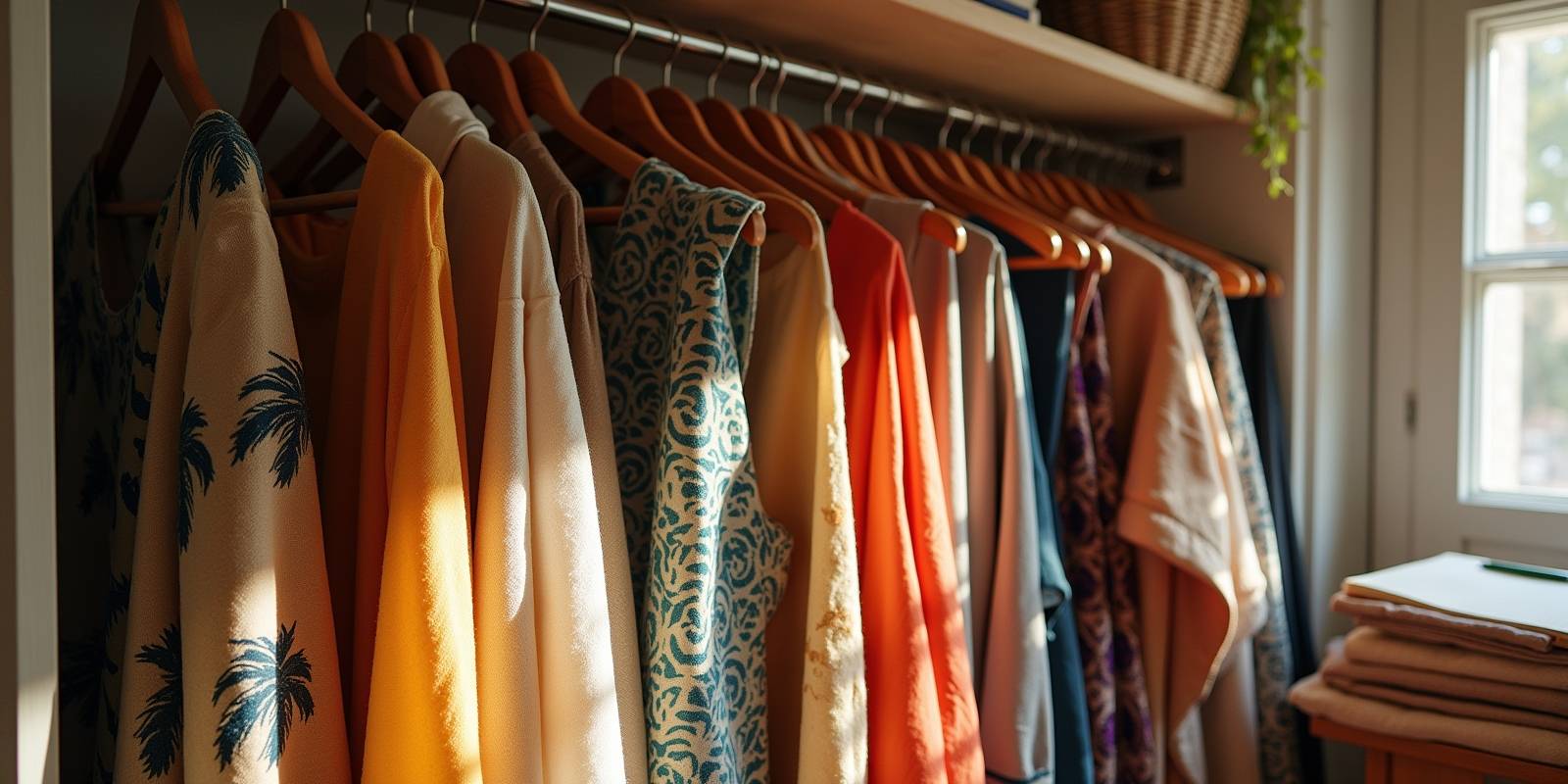Remember when shopping meant driving to the mall, browsing for hours, and carefully considering each purchase? Those days feel like ancient history now. Today, we can buy anything with a single tap, and it arrives at our doorstep within hours. But here’s the thing—this convenience comes at a cost that goes far beyond our credit card statements.
I’ve been thinking a lot about this lately, especially after cleaning out my closet and finding clothes with tags still attached. That moment hit me hard. When did I become someone who buys things I don’t even wear? When did consumption become so mindless?
This realization sparked my journey toward conscious consumption, and I want to share what I’ve learned about making slower, more sustainable choices as consumers.
Being a conscious customer isn’t about perfection or deprivation. It’s about making intentional choices that align with your values while considering the broader impact of your purchases. Think of it as shopping with your eyes wide open—seeing beyond the price tag to understand the true cost of what you’re buying.
Conscious consumption means asking yourself questions like: Do I really need this? How was it made? Who made it? What happens to it when I’m done with it? These questions might slow down your purchasing process, but that’s exactly the point.
The Hidden Costs of Fast Everything
 We live in a “fast everything” culture—fast fashion, fast food, fast furniture, fast electronics. Companies have mastered the art of making us want things we didn’t know we needed five minutes ago. But this speed comes with hidden costs that we’re only beginning to understand.
We live in a “fast everything” culture—fast fashion, fast food, fast furniture, fast electronics. Companies have mastered the art of making us want things we didn’t know we needed five minutes ago. But this speed comes with hidden costs that we’re only beginning to understand.
Take fast fashion, for example. That $15 dress seems like a steal until you learn about the working conditions in factories, the environmental impact of textile production, and the fact that the average garment is worn only seven times before being discarded. Compare this to a handloom textile that might cost $50 but was created by skilled artisans earning fair wages, uses natural dyes, and can last for decades with proper care.
The same pattern repeats across industries. Fast furniture falls apart quickly, creating waste, while a handcrafted wooden piece can last generations. Mass-produced ceramics chip and break easily, while hand-thrown pottery develops character over time. The contrast is striking when you start paying attention.
There’s something magical about owning something made by human hands. Every handloom textile tells a story—of the cotton that grew in the fields, the natural dyes extracted from plants, the weaver who spent days creating intricate patterns. Every handicraft piece carries the maker’s touch, their skill, their cultural heritage.
I remember the first handloom saree I bought directly from a weaver in Varanasi. The silk was lustrous, the gold zari work exquisite, and the entire experience felt sacred. The weaver showed me how each thread was carefully placed, how the patterns had been passed down through generations. That saree cost more than three machine-made ones, but wearing it felt completely different—like wrapping myself in art and history.
Handloom and handicraft products offer something that mass-produced items simply cannot: soul. They connect us to traditions, to communities, to the very human act of creation. When you buy a hand-block printed fabric, you’re not just buying cloth—you’re supporting an ancient craft, preserving traditional techniques, and ensuring artisans can continue their work.
The Power of Slow Shopping
Slow shopping is the antithesis of impulse buying. It’s about taking time to research, reflect, and really consider whether a purchase aligns with your needs and values. This doesn’t mean you need to spend weeks deciding on every purchase, but it does mean pausing before you buy.
I’ve started implementing what I call the “48-hour rule” for non-essential purchases. If I want something, I wait at least 48 hours before buying it. You’d be amazed how often that initial desire fades. Sometimes I completely forget about the item, which tells me I didn’t really need it in the first place.
For handloom and handicraft products, this waiting period often becomes an opportunity to learn more about the craft, the artisan, and the cultural significance of the piece. When I was considering a hand-carved wooden jewelry box, I spent time researching the traditional techniques used, the type of wood, and the artisan’s story. By the time I made the purchase, I felt deeply connected to the piece and confident in my choice.
This approach works especially well for handcrafted items because they’re often investment pieces—items you’ll treasure for years rather than discard after a season. The time you spend researching and considering becomes part of the joy of ownership.
Building Your Sustainable Shopping Framework
Creating a sustainable shopping framework isn’t about following rigid rules—it’s about developing personal guidelines that make sense for your life and values. Here’s how to build your own:
Start with your values. What matters most to you? Environmental impact? Supporting small businesses? Fair labor practices? Quality over quantity? Your values will guide your purchasing decisions.
Assess your actual needs. Before you shop, take inventory of what you already have. Do you really need another black sweater, or do you just want one? Understanding the difference between needs and wants is crucial for conscious consumption.
Research before you buy. This doesn’t mean spending hours researching every purchase, but it does mean doing basic due diligence. Read reviews, check company policies, and understand what you’re buying.
Consider the lifecycle. Think about what happens to your purchase after you buy it. How long will it last? Can it be repaired? What happens when you’re done with it? Products with longer lifecycles and repair options are generally better choices.
One of the biggest shifts in conscious consumption is moving from a quantity mindset to a quality mindset. Instead of buying multiple cheap items, you invest in fewer, higher-quality pieces that last longer.
This requires a mental shift about how we think about cost. A $200 handwoven khadi kurta might seem expensive compared to a $30 machine-made one, but if the handwoven piece lasts ten years while the cheap one lasts two, the cost per wear is actually lower for the handwoven kurta. Plus, you get the satisfaction of owning something beautiful and supporting traditional crafts.
I learned this lesson with home textiles. I used to buy cheap curtains and bedsheets that would fade and wear out quickly. Then I invested in handloom cotton bedsheets and hand-block printed curtains. Three years later, they still look beautiful and feel luxurious. The initial investment was higher, but the long-term value—both financial and emotional—is undeniable.
Handloom and handicraft products are perfect examples of this investment mindset. A hand-knotted carpet can last for generations, becoming more beautiful with age. A hand-thrown ceramic dinner set develops character over time. These aren’t just purchases—they’re heirlooms in the making.
Supporting Artisans and Traditional Crafts
Part of being a conscious customer means supporting artisans and craftspeople who keep traditional techniques alive. When you buy handloom fabrics, you’re not just getting a beautiful textile—you’re supporting skilled weavers, preserving ancient techniques, and helping sustain entire communities.
The handloom and handicraft sector employs millions of artisans worldwide, many of whom are women in rural areas. Your purchase provides them with stable income and helps preserve skills that might otherwise be lost to industrialization. This is particularly important for traditional crafts that have been passed down through generations.
Look for brands and retailers that work directly with artisan groups, ensuring fair wages and good working conditions. Many organizations now provide transparency about their supply chains, showing you exactly who made your products and how they were made. Some even share stories and photos of the artisans, creating a personal connection between maker and buyer.
I’ve started buying directly from artisan cooperatives whenever possible. Not only do I get unique, high-quality pieces, but I also know that my money is going directly to the people who created them. There’s something deeply satisfying about knowing the story behind your purchases.
The Art of Mindful Consumption
Mindful consumption is about being present and intentional with your purchases. It means shopping with awareness rather than autopilot. This might sound simple, but it’s surprisingly difficult in our distraction-filled world.
When you’re shopping, try to stay focused on what you came for. Make a list and stick to it. Avoid shopping when you’re emotional, tired, or stressed—these states make us more susceptible to impulse purchases.
Practice gratitude for what you already have. When you appreciate what you own, you’re less likely to feel the need to constantly acquire new things. I started a gratitude practice where I regularly acknowledge items in my home that I love and use frequently. It’s amazing how this shifts your perspective.
Here are some practical strategies I’ve developed for more conscious shopping, particularly when it comes to handloom and handicraft products:
Research the craft before you buy. Understanding the technique, the time involved, and the cultural significance helps you appreciate the true value of handmade items. This knowledge also helps you distinguish between authentic handmade pieces and machine-made imitations.
Buy directly from artisans when possible. Many weavers and craftspeople sell directly through social media, craft fairs, or artisan cooperatives. This ensures they get fair compensation for their work and helps you build relationships with makers.
Learn to identify quality in handmade goods. Look for slight irregularities that show human craftsmanship, check the quality of materials used, and examine the finishing details. These skills help you make better purchasing decisions.
Care for your handcrafted items properly. Handloom fabrics often require special care—hand washing, proper storage, gentle handling. Learn these techniques to ensure your pieces last for years.
Start with small purchases. If you’re new to buying handcrafted items, start with smaller pieces like scarves, placemats, or decorative items. This helps you understand the quality and care requirements before making larger investments.
Support local artisans. Look for craftspeople in your own region. Every area has traditional crafts—pottery, weaving, woodworking, metalwork. Supporting local artisans reduces environmental impact and strengthens your community.
Overcoming the Challenges
Conscious consumption isn’t always easy. You’ll face social pressure, convenience temptations, and the constant marketing messages telling you to buy more. Here’s how to stay on track:
Remember your why. When you’re tempted to make an impulse purchase, remind yourself of your values and goals. Why did you choose to shop more consciously in the first place?
Find your tribe. Surround yourself with people who share your values. Join online communities focused on sustainable living, or find local groups interested in conscious consumption.
Celebrate small wins. Every conscious choice matters. Celebrate when you choose quality over quantity, when you repair instead of replace, or when you simply decide not to buy something you don’t need.
Be patient with yourself. Changing consumption habits takes time. Don’t expect perfection immediately. Focus on progress, not perfection.
The Ripple Effect of Conscious Choices
When you choose to shop more consciously, you’re not just changing your own life—you’re contributing to a larger movement toward sustainability and social responsibility. Every purchase is a vote for the kind of world you want to live in.
Companies respond to consumer demand. When enough people choose sustainable options, businesses adapt. We’re already seeing this with the rise of sustainable fashion brands, plastic-free packaging, and companies adopting more transparent practices.
Your choices also influence the people around you. When friends and family see you making conscious choices, they might start questioning their own consumption habits. Change spreads in ripples, and your individual choices contribute to broader cultural shifts.
Moving Forward: Your Conscious Consumer Journey
Becoming a conscious customer is a journey, not a destination. It’s about making better choices over time, not achieving perfection overnight. Start small, be patient with yourself, and remember that every conscious choice makes a difference.
The goal isn’t to never buy anything again—it’s to buy better. To choose products that last longer, treat workers fairly, and minimize environmental impact. To support companies that align with your values and to find joy in quality over quantity.
In our fast-paced world, choosing to be a conscious customer is actually a radical act. It’s choosing mindfulness over mindlessness, quality over quantity, and values over convenience. It’s choosing to slow down in a world that’s constantly speeding up.
The journey toward conscious consumption has changed not just what I buy, but how I think about ownership, value, and my place in the world. It’s made me more intentional, more grateful, and more connected to the true impact of my choices.
Your conscious consumer journey starts with your next purchase. Before you buy, pause and ask yourself: Is this aligned with my values? Do I really need this? Will this purchase contribute to the kind of world I want to live in?
The planet, future generations, and your own sense of purpose will thank you for taking the time to choose consciously.





